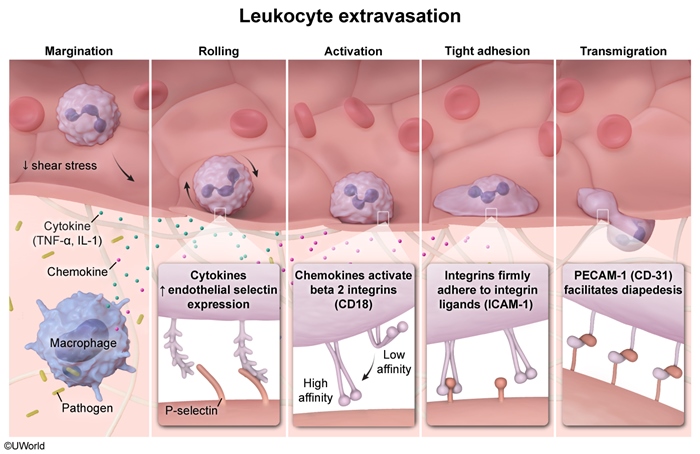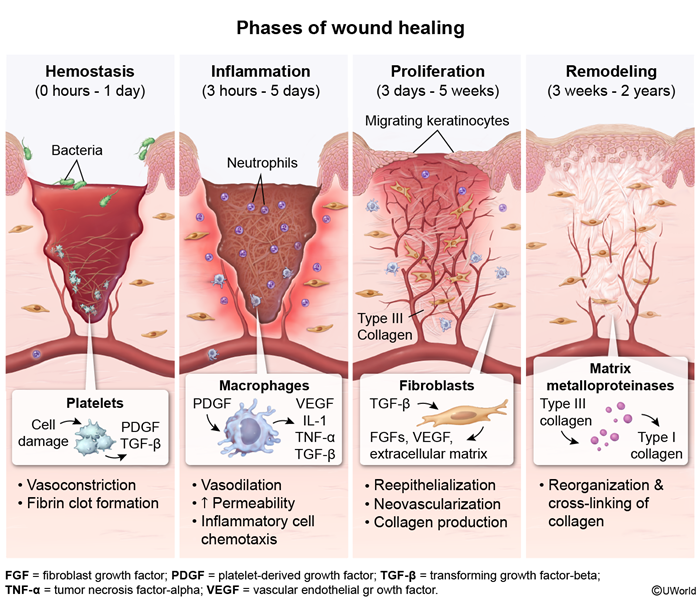Leukocyte Adhesion Deficiency
Article Sections
Introduction
Leukocyte adhesion deficiency (LAD) is a rare autosomal recessive genetic disorder characterized by deficient CD18-containing integrins on the surface of leukocytes (particularly neutrophils), impairing leukocyte adhesion to the endothelium. Patients are at increased risk for recurrent infections and impaired wound healing.
Pathogenesis and risk factors
Normally, leukocytes circulate with minimal contact with the endothelium. When inflammation (eg, infection, injury) occurs, leukocytes must migrate to the site, a process that requires several steps (Figure 1). Following phagocytosis of the pathogen, tissue macrophages release inflammatory cytokines that increase the expression of endothelial selectins. Weak interaction with selectins allows circulating leukocytes to roll along the endothelium. Increased contact with the endothelium activates integrins (heterodimers of alpha- and beta-protein chains) on the surface of leukocytes. Integrins
Continue Learning with UWorld
Get the full Leukocyte Adhesion Deficiency article plus rich visuals, real-world cases, and in-depth insights from medical experts, all available through the UWorld Medical Library.
Figures

